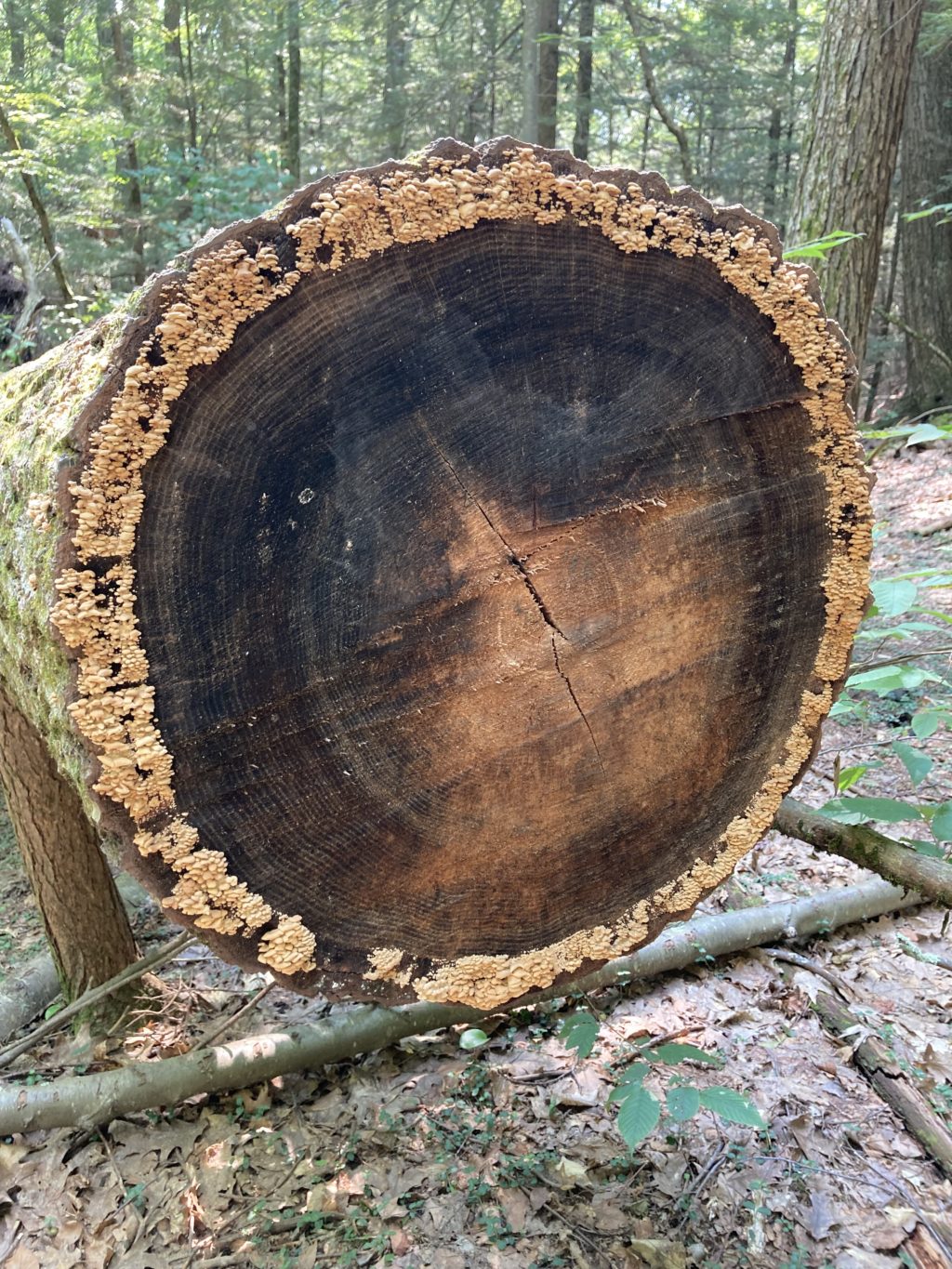Almanac Quiz #1

Photo: Stephen Braun
Hello gentle readers. I’m briefly on the west coast so no regular column this week. Instead, here’s a shot I took several weeks ago while hiking on North Sugarloaf mountain in South Deerfield. I’ve never seen this particular phenomenon before, so I thought I might write about it. But I haven’t had a chance to do the research, so at the moment I only have my own hunch about why the fungi formed this kind of a ring. The fungi are on an oak tree that looks like it was felled relatively recently—meaning probably not more than a year or two ago.
I have no idea what kind of fungus this is…identifying this type of small, generic fungi is tricky. If any of you can identify it, please post a comment. But, regardless of the species, why do you think the fungus formed this ring? Why isn’t the entire cut surface of the log covered? Use the comments function to leave your guesses/hypotheses. I’ll look into the matter upon my return and will share what I learn. Meanwhile, the woods should be teeming with fungal specimens in the soggy wake of tropical storm Henri. You’re almost certain to see something you’ve never seen before!
Almanac is a regular Indy column of observations, musings, and occasional harangues related to the woods, waters, mountains, and skies of the Pioneer Valley. Please feel free to comment on posts and add your own experiences or observations.

Perhaps more sugars in the dead phloem is why the fungi prefer that to the xylem…?
I think Rob has it right on why the shrooms are growing where they are growing. It’s difficult to see in the photo whether these guys have gills, pores, or stems, but at first blush it could be Armillaria Mellea , or oak rot , a wood decay fungus (mushroom) grown in clusters. Armillaria root disease produces a thin white fungal material, known as mycelial fan, that can be found growing between the bark and wood on infected trees, hence the ring. The phloem and cambium layers of the tree just inside the bark are where growth happens and nutrients flow – where all the action is. Mycelial fans, though, are more common on conifers than on oak trees. Nice catch, Stephen.
We can save your mushrooms, mister, but I’m afraid the tree is a gonner!
If you care about all the humongous fungus among us, now is a great time to explore. The deluge will make ‘em pop.